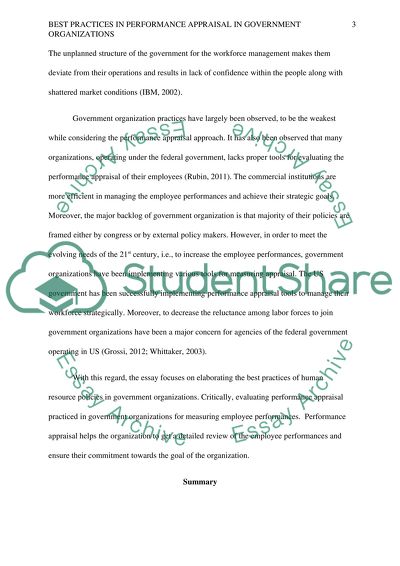Cite this document
(“Best practices in performance appraisal in government organizations Research Paper”, n.d.)
Best practices in performance appraisal in government organizations Research Paper. Retrieved from https://studentshare.org/human-resources/1653203-best-practices-in-performance-appraisal-in-government-organizations
Best practices in performance appraisal in government organizations Research Paper. Retrieved from https://studentshare.org/human-resources/1653203-best-practices-in-performance-appraisal-in-government-organizations
(Best Practices in Performance Appraisal in Government Organizations Research Paper)
Best Practices in Performance Appraisal in Government Organizations Research Paper. https://studentshare.org/human-resources/1653203-best-practices-in-performance-appraisal-in-government-organizations.
Best Practices in Performance Appraisal in Government Organizations Research Paper. https://studentshare.org/human-resources/1653203-best-practices-in-performance-appraisal-in-government-organizations.
“Best Practices in Performance Appraisal in Government Organizations Research Paper”, n.d. https://studentshare.org/human-resources/1653203-best-practices-in-performance-appraisal-in-government-organizations.


